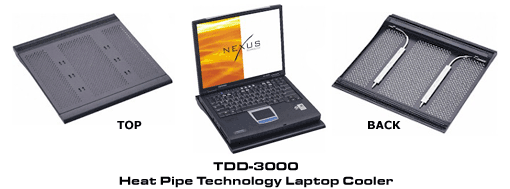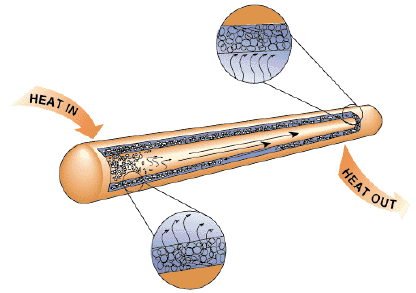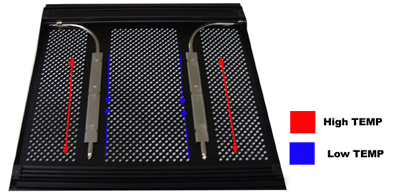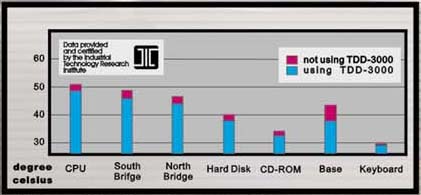
|
TOD-3000 m[gPCN[[
Heat Pipe Technology Laptop Cooler

|
| Nexus Thermal Innovation introduces the TDD-3000.
A revolutionairy notebook computer cooler with heat-pipe
technology. The TDD-3000 cools a notebook computer without
producing any noise and even without any installation or power usage.
Zero electricity needed heat-pipe solution helps to keep your notebook computer
at a lower temperture. "No Installation Needed Just Put Your Computer On The TDD-3000 And Ready To Cool" |
| Á¥ |
| Fann-less, zero-noise operation, reduces computer noise by reducing internal fan usage. Increases overall computer battery life by reducing internal cooling fan usage. No USB port used and no internal electricity consumed at all. Compatible with all notebook computers. No installation needed. Revolutiounary heatpipe solution helps dissipate heat from the centre. Use it anytime, anywhere...no annoying AC adapter needed. Dimensions: 31,3 cm x 30,6 cm |
| q[gpCv |
| How it works: Heat pipes remove heat from the source in a two-phase process. As heat is generated, a liquid at one end of the pipe evaporates and releases the heat to a heat sink by condensation at the other end. The liquid is returned to start the process over through a wick structure on the inside of the heat pipe. 

Heat-pipes passively transfer heat from the heat
source to a heat sink where the heat is dissipated. The heat pipe itself
is a vacuum-tight vessel that is evacuated and partially filled with a minute
amount of water or other working fluid. As heat is directed into the device,
the fluid is vaporized creating a pressure gradient in the pipe. This forces
the vapor to flow along the pipe to the cooler section where it condenses,
giving up its latent heat of vaporization. The working fluid is then returned
to the evaporator by capillary forces developed in the heat pipe's porous
wick structure, or by gravity. (See illustration)

Measurements: 
Data provided and certified by the Industrial Technology
Research Institute.
|

|
| TEL 0480-93-4590@@FAX 0480-93-2021@@ |
(C) Copyright 2000 |